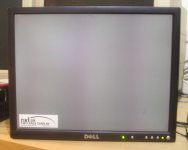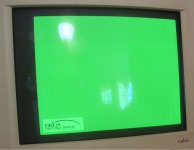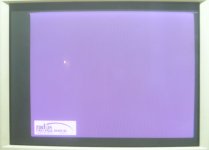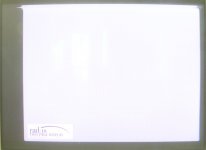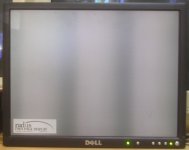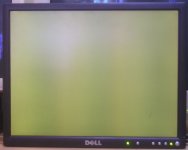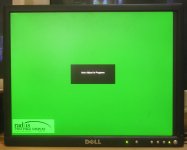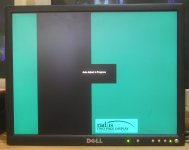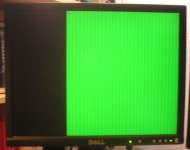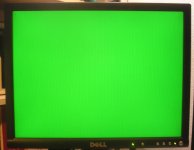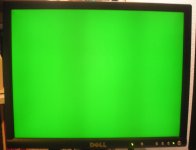Trash80toHP_Mini
NIGHT STALKER
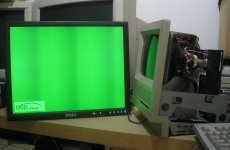
Still need to get it set up for black on white, hopefully that's only a question of tying RGB inputs together at the VGA end of things, but my LCD success should give hope to others with SE cards dedicated to proprietary displays.
After the Adjust in Progress screen dropped away, some patience was definitely required for the panel to sync up. Wasn't that patient with the 19" 1280x1024 Dell GENESIS UltraSharp, so I should try it again as it might work as well. I moved right on to the 1600x1200 capable 20" version, getting the same blank, dull overall image result that went dark when I shut down the SE. Decided to let it sit until it just up and told me it was unable to sync to the TPD signal, but it did! [
Fun time for this one is about over for now. The SE's video is borked whether the Radius TPD card is in place or not. I get the bong and it must be booting to the :huh: screen as the mouse cursor roams about the TPD portion of the desktop on command. There's no startup disk in the system ATM, so all drivers needed for basic function are stored on the card itself. Gonna button everything back up and put the card back in the project box until I have time to troubleshoot the SE. I'll leave it out for the day in case someone can confirm that tying R&B together with the Sync/G signal won't kill anything. Solder cup terminated HD15 is bolted up to the BNC/backplane bracket with convenient DE-9 punch in it already and I can make the time for a bit of soldering.
Project started out in the Radius TPD/SE BNC->Monitor connection woes . . . thread for any interested in the TLDR scoop. Thankfully I never got to the woes part. Broke that thread off with this pic . . .
View attachment 27986
. . . but few have a monster MultiSync CRT available. So I figured the LCD test and this new thread were in order so others can share their results. Looks better centered up on the LCD anyway.
Last edited by a moderator:

